Renault brings the 90s Twingo into the electric era
Renault is sticking to its plans for the new Twingo E-Tech with an entry-level price of less than 20,000 euros when launching it in 2026. Until recently, the manufacturer still had the namesake Twingo Electric in its range, which has nothing to do with the upcoming retro-electric vehicle in terms of looks. However, Renault quietly withdrew the current Twingo Electric from the programme in August, thus setting the stage for the retro EV, which will roll off the production line in Novo Mesto, Slovenia, in the future.
And the French company wants to give the Twingo E-Tech plenty of limelight at its home trade show in Paris next week. A show car with many design references to the first Twingo generation from the 1990s will be on display at the Renault stand. The car manufacturer provided the first images of how Renault intends to transfer the striking Twingo features into the electric era in November 2023 – now, the study can be seen live for the first time.
Third revived Renault icon
The current presentation follows a clear nostalgia path. After the R5 and R4, a third icon will be revived with the Twingo. Bright colours and the “humanisation” approach form a common thread – according to Renault, the cars should have “faces.” While the electric R5 will launch this year, the electric R4, which celebrated its world premiere in Paris, will follow in 2025. The new E-Twingo was also supposed to hit the road next year, but Renault is now talking about 2026 in its latest press release.
Let’s move on to the show car itself. First of all, Renault has not yet provided any technical data. However, the Twingo E-Tech will be positioned as an electric car for urban traffic. In terms of design, the show car adopts several playful elements from the first Twingo generation. For example, the proportions with the flat rising windscreen, the rounded door handles and the round headlights protruding slightly from the bonnet, now framed by LED rings. Unlike the original, however, the show car has five doors and a fixed glass roof. At the rear, the curved rear lights resemble the design of the front headlights. According to Renault, the Twingo E-Tech “also has an unmistakable face. Its expressive and endearing look comes from the headlamps and the lines of its front end.”
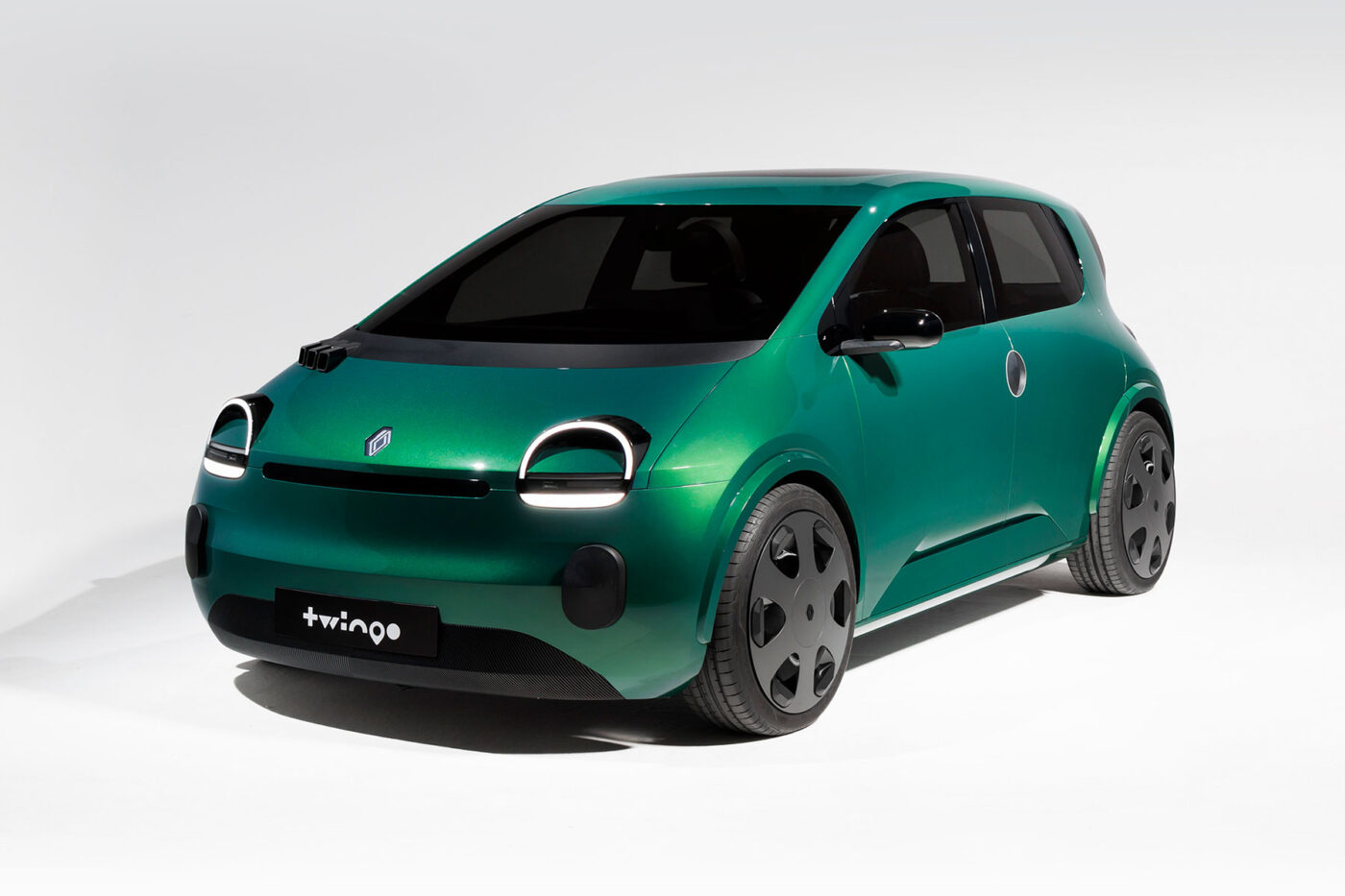
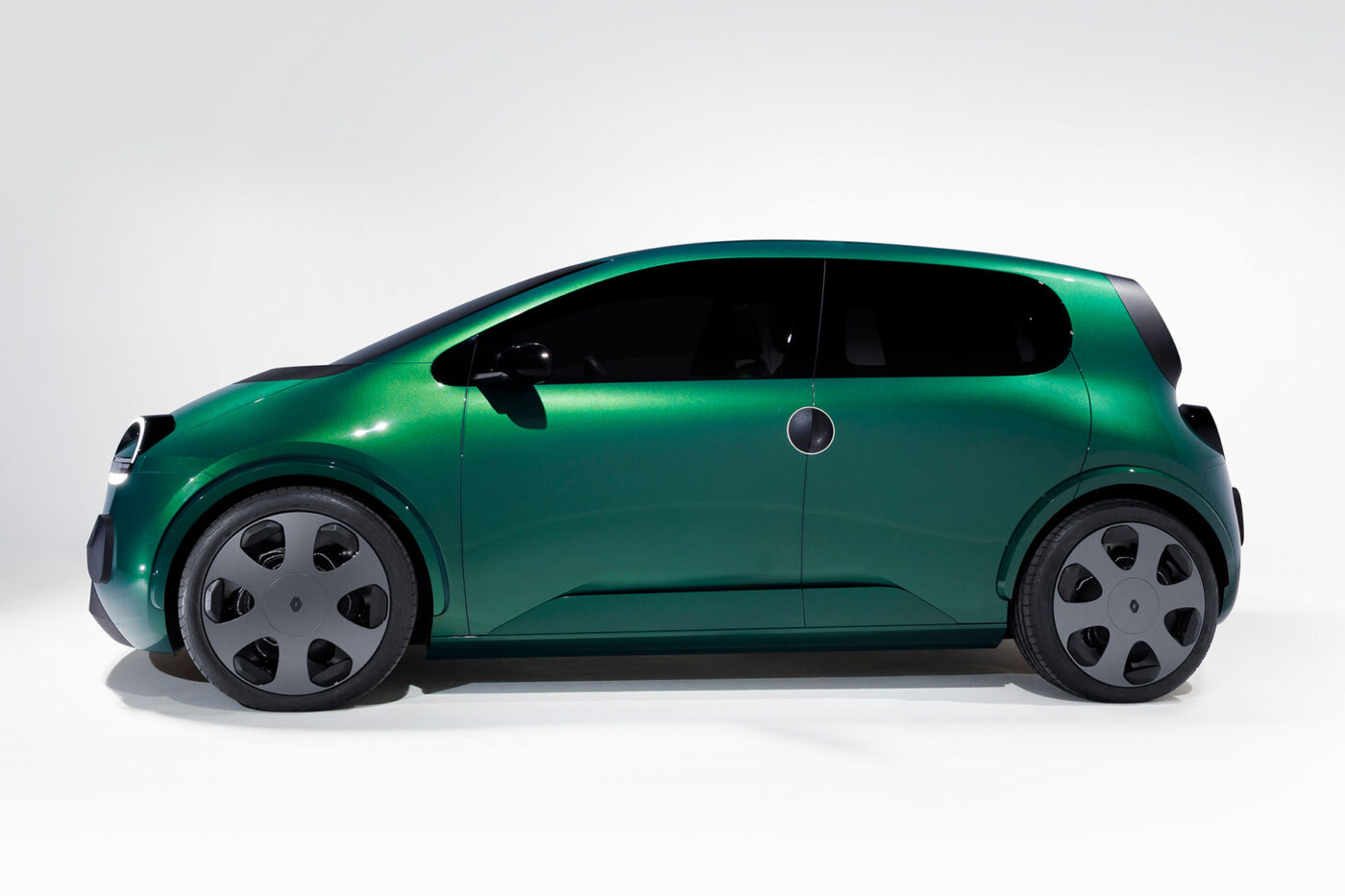
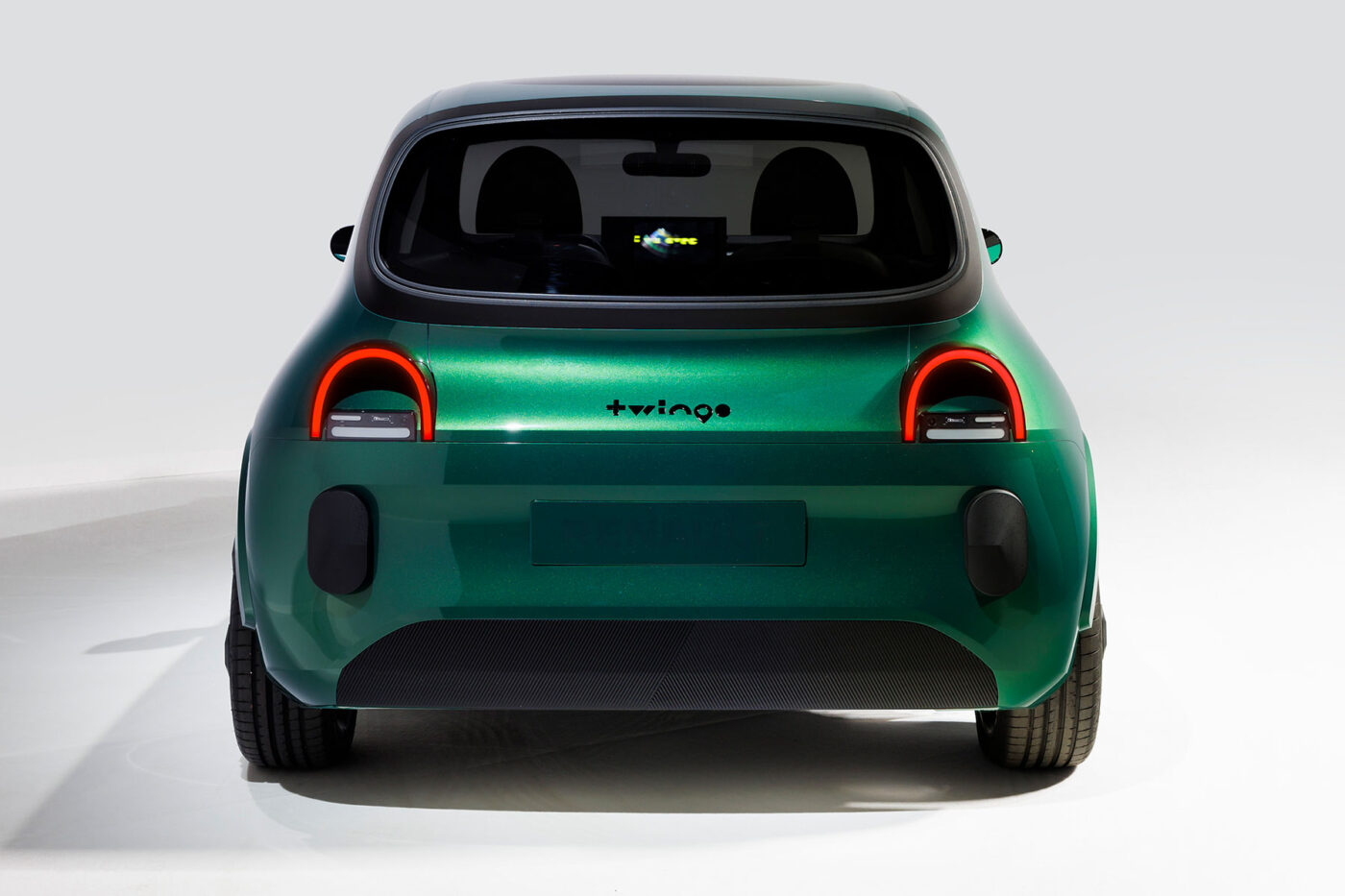
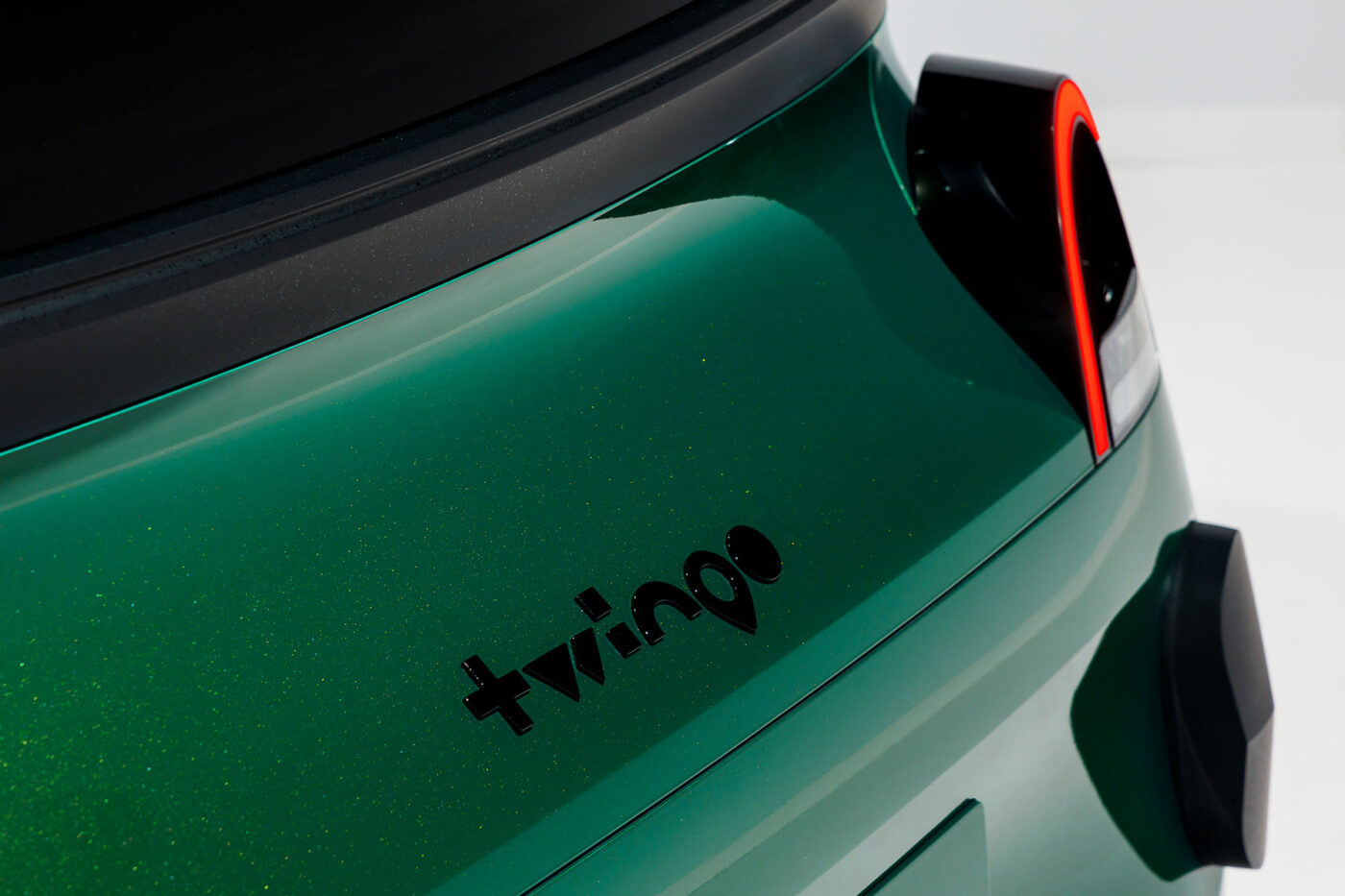
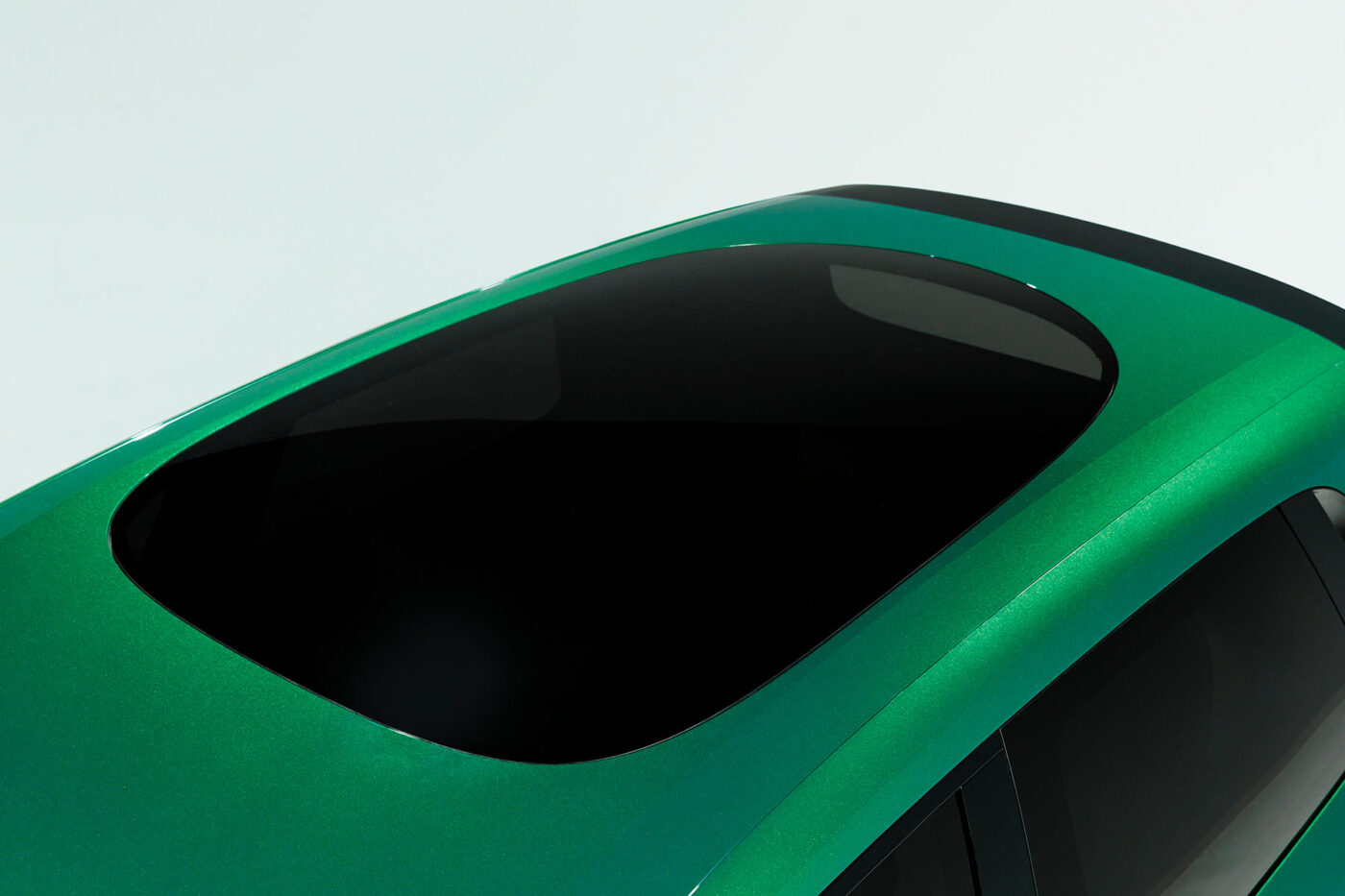
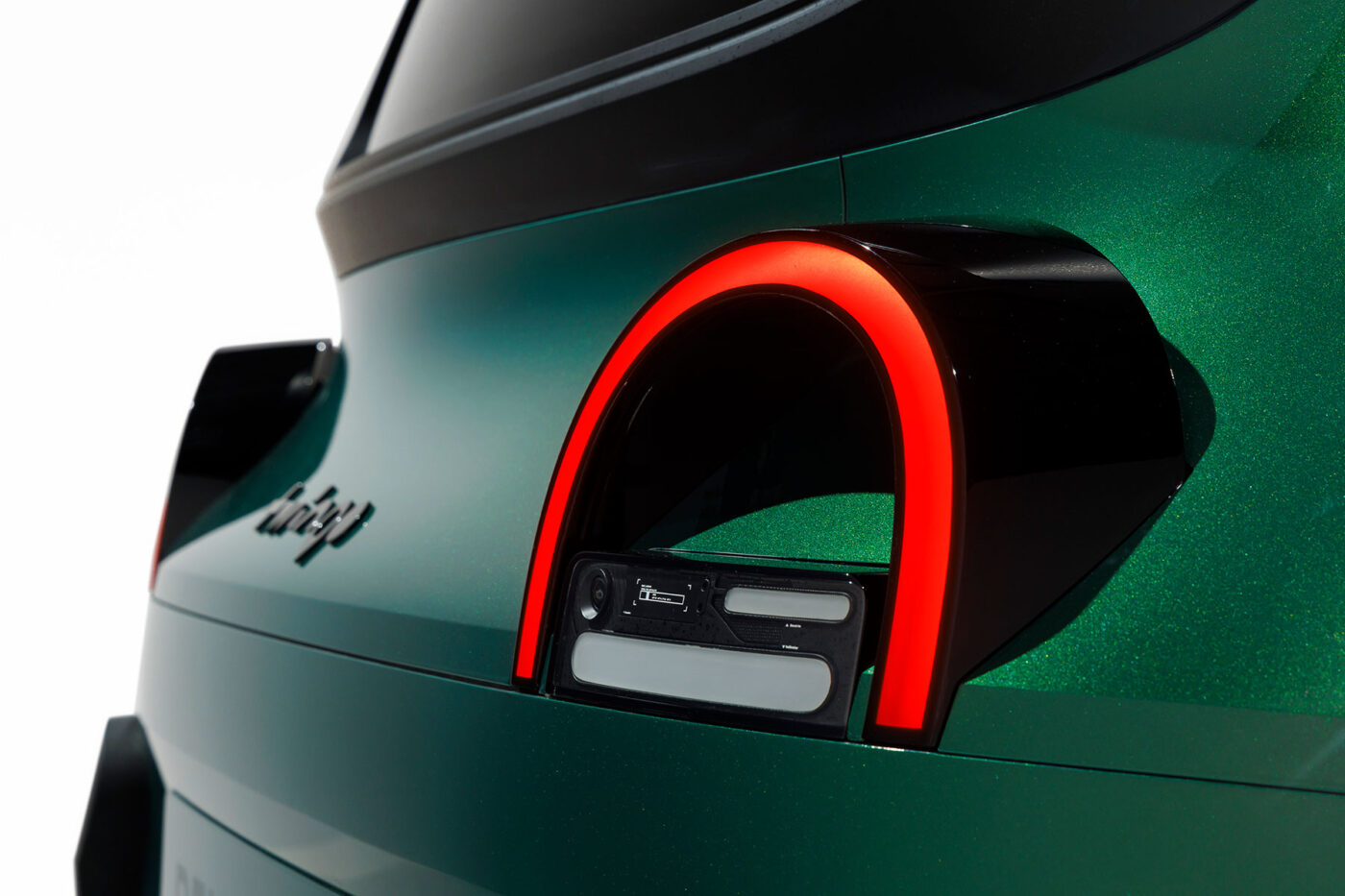
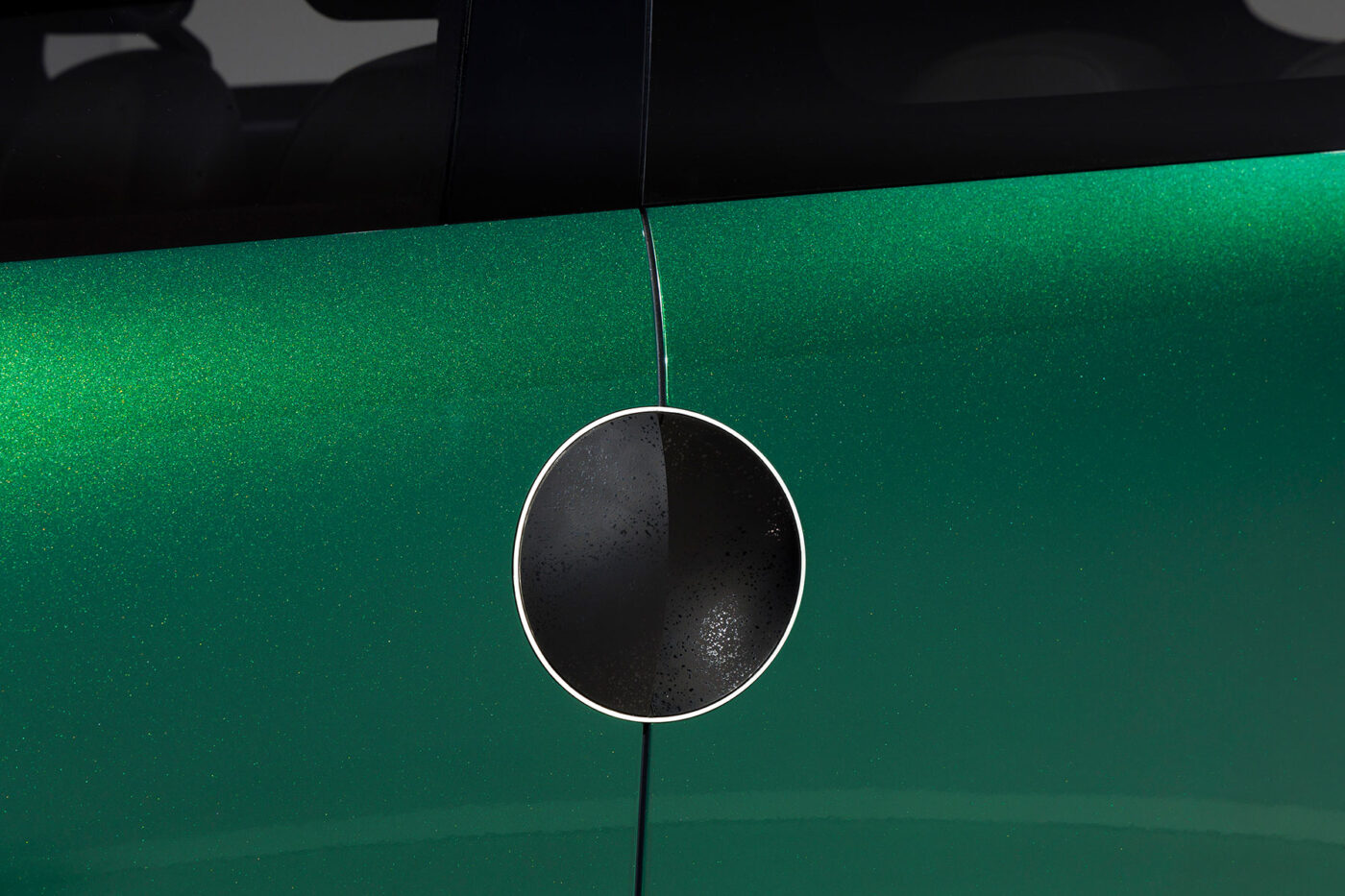
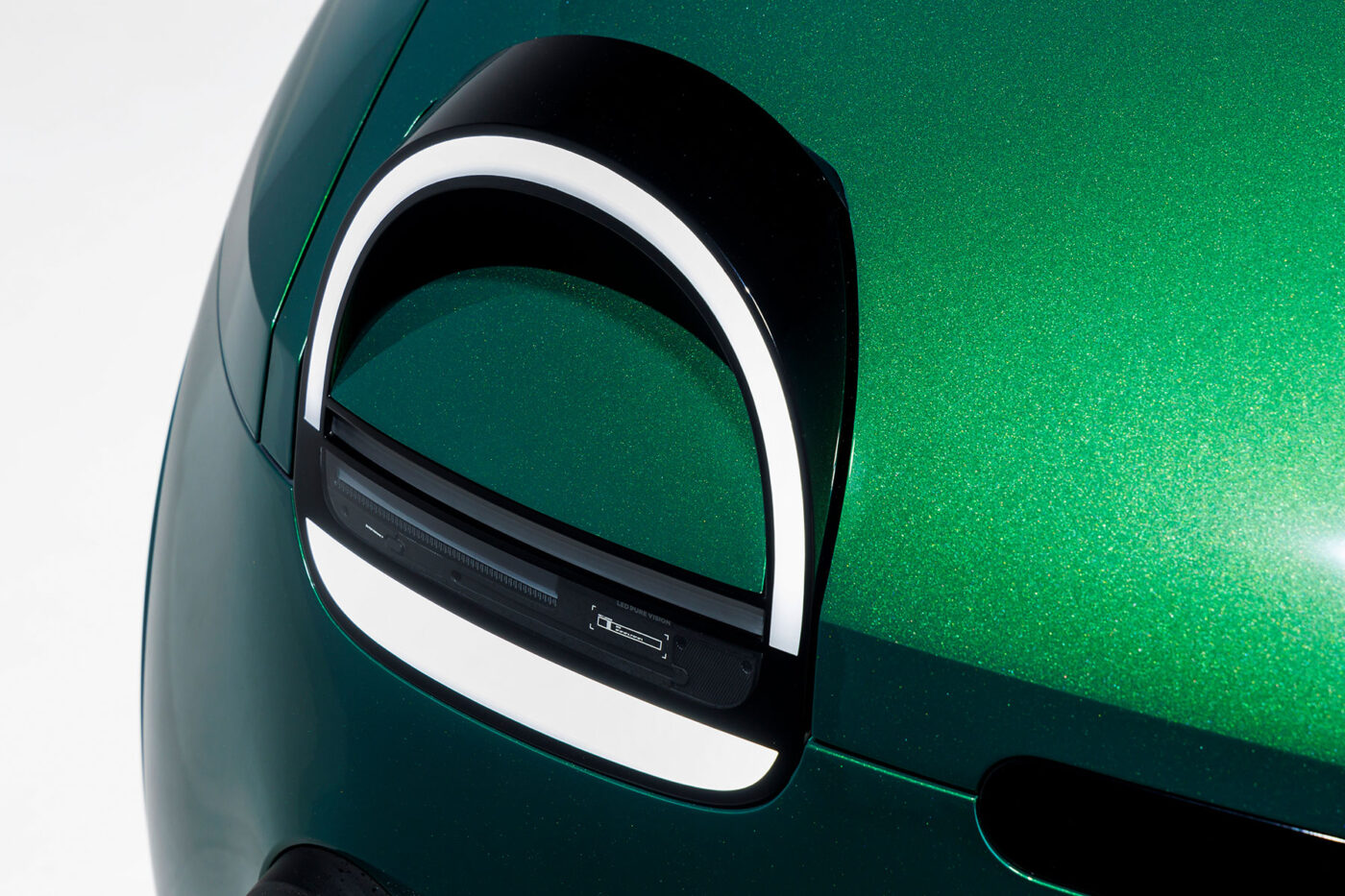
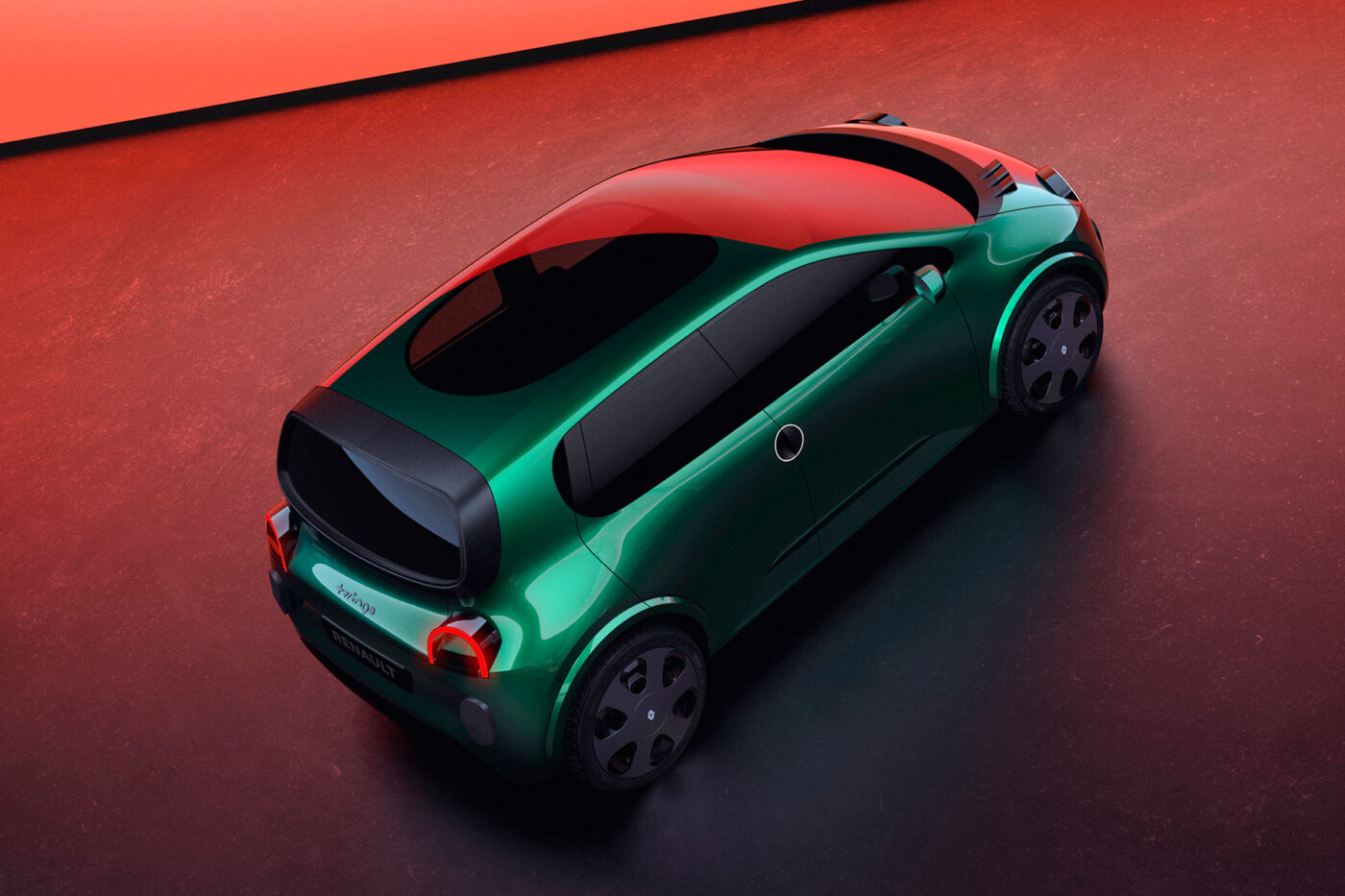
The paintwork is a striking shimmering green, which, in combination with matt black colour elements, is somewhat more muted than the bright green used for the presentation of the electric R5. However, Renault continues to play the colour card, as does its preference for original details. For example, the Twingo show car also appears to have three indicated openings on the bonnet (responsible for engine ventilation in the original), which may serve as an external battery level indicator.
Renault first realised this unusual feature on the bodywork in electric studies for the electric R5. Anyone who thought it was just a gimmick was proven wrong at the market launch. The battery indicator on the bonnet made it into series production. The vehicle’s charge level can thus not only be checked in the cockpit or the app, it is also displayed in the field on the bonnet as the driver approaches the vehicle. However, it remains to be seen whether this feature will also be included in the entry-level version of the future electric Twingo for under 20,000 euros. Press images from last November showed the E-Twingo with an external charge level indicator; the images supplied for the Paris Motor Show now depict the indicated openings without numbers.
Incidentally, Renault recently applied its nostalgia concept to the commercial vehicle sector. The so-called Estafette Concept was on display at the IAA Transportation in Germany. The electric van study is intended to evoke memories of Renault’s van of the same name from 1959. However, the visual relationship may not be obvious at first glance. The 2024 study is too streamlined for that. One thing is certain: Renault has remained faithful to the bright colours in the Estafette Concept. Although the vehicle itself is grey, it features a lemon-yellow roof.

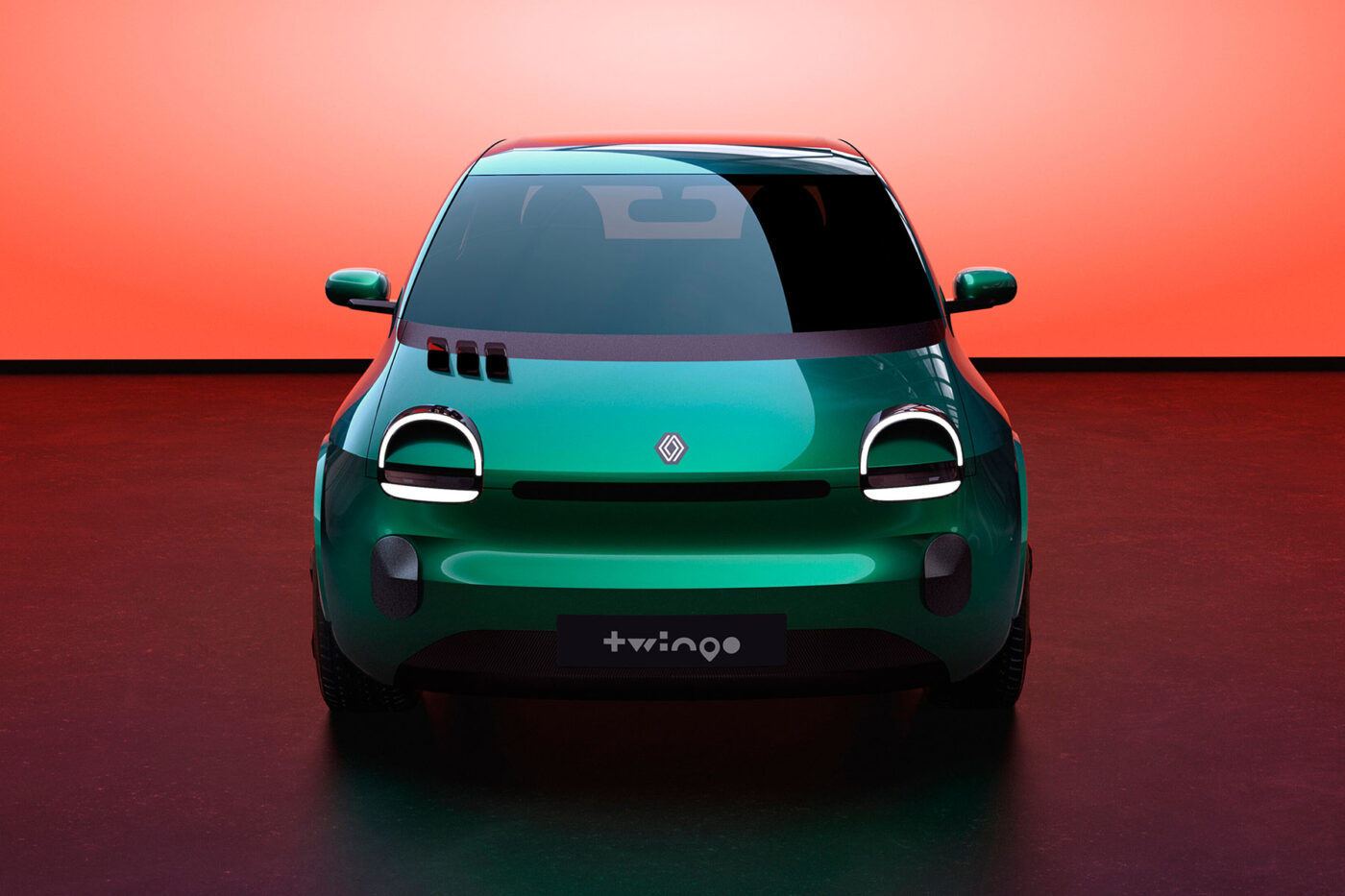
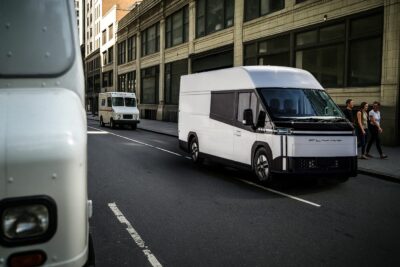

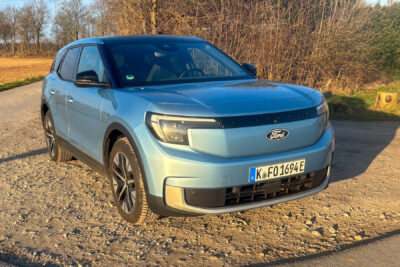
1 Comment